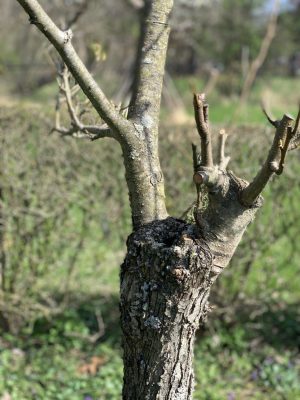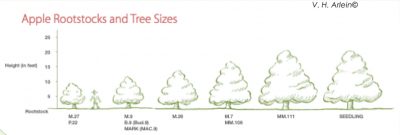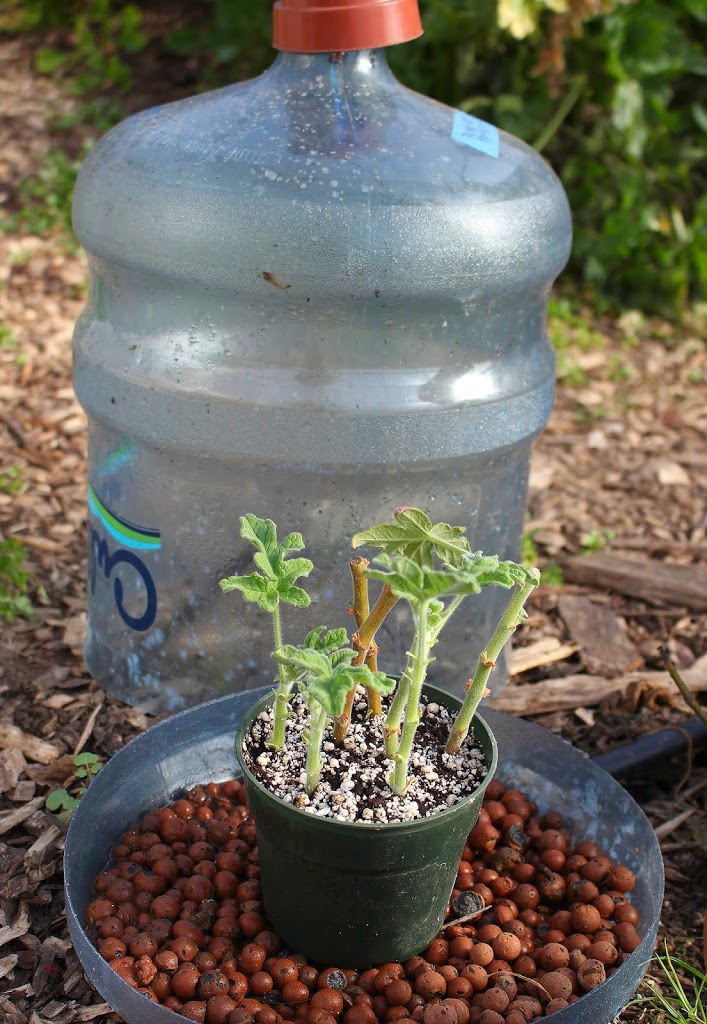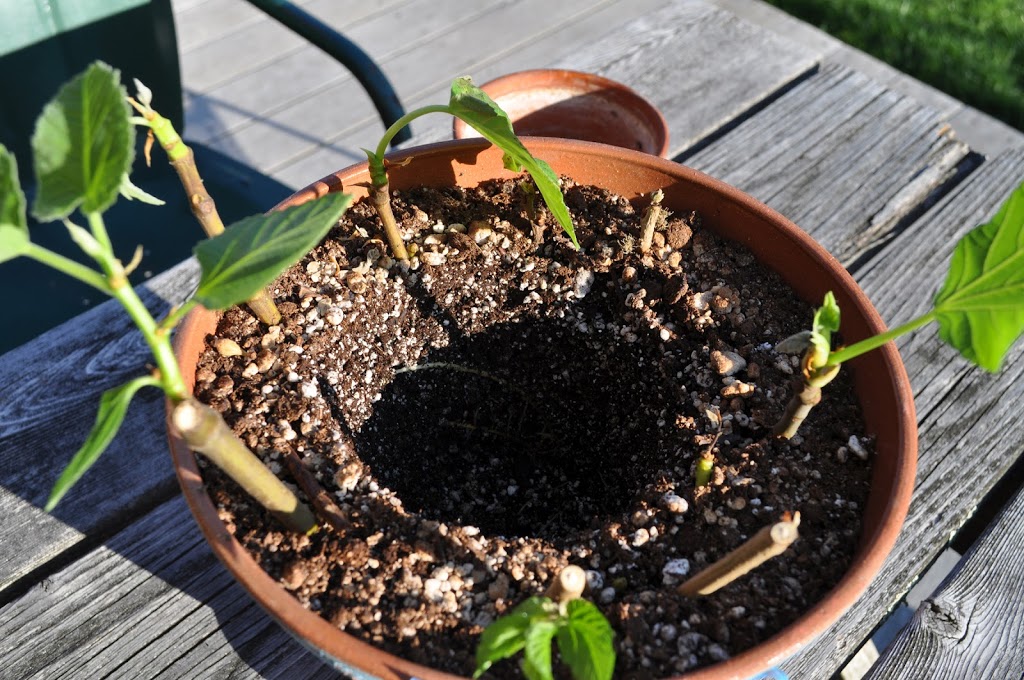And the winner of my book giveaway from last week is . . . (drum roll) . . . reader Meg Webb. Hey Megg, send me an email with your mailing information and I’ll get the book to you. Thanks to everyone else for their feedback.
————————————————–
I have to admit a certain addiction for propagating plants. You would think that, what with sowing cabbage and Brussels sprouts seeds for transplants last week, starting tomato transplants in early April, grafting to make new Korean mountainash and apple trees and . . . ., any appreciation for propagation would be fulfilled.
But no. The seeds within a freshly eaten kumquat; why not plant them? Some of the seeds within a just eaten hardy passionfruit (Passiflora incarnata); plant them also. Not that every seed gets planted. Just some of the more unusual ones or just a few of those that are more usual. Without any restraints, a forest of apple and pear trees would have long ago inundated me.
My mania came to the fore again yesterday as I was neatening up some houseplants. The rose geranium had grown very leggy, with three or four lanky shoots, almost leafless except near their ends,
stretched out to a very unattractive 2 foot length. All that was needed to bring the plant back to its visual glory was to cut everything back to some tufts of leaves sprouting near its base. Which I did.
But those pruned stems; could I really just toss them into the compost pile? No. “Make new plants,” whispered the devil on my left shoulder. Which I did.
All that was needed to make more of this relatively easy-to-propagate plant was to cut the pruned stems into 4 inch lengths, with each bottom cut just below a node and each top cut just above a node. Best wound healing is at nodes, so such cuts avoid dead stubs with poor healing.
All but 2 or 3 leaves were removed from the 4 inch stem segments at the ends of the stems in order to strike a balance between cutting down water loss from the as yet unrooted stem pieces and allowing for some photosynthesis to feed the stem. To grow new leaves and roots, the leafless stems segments will have to rely on their stored energy reserves. To save space, I filled a flowerpot with potting soil and poked each stem segment about two-thirds of its length deep into the soil, then watered.
A clear plastic cover over the planted pot increases humidity to further reduce transpiration of water from leaves until roots form.
————————————————
Pruning shrubs, which generates a lot of stems, could be a real test of my restraint.
Shrubs are shrubs because they generally don’t have long-lived permanent trunks, like trees. Every year, new stems arise from at or near ground level. The way to prune shrubs, then, is to capitalize on this characteristic, by so-called renewal pruning, each year removing some oldest stems and excess youngest stems (suckers). Pruning is done near or at ground level. In so doing, the roots get older and older but no stem ever gets very old, and youngest stems have room to develop.
Easy enough. The wrinkle in renewal pruning is knowing when a stem has overstayed its welcome. If you know the plant, you can just look up the information — in my book, THE PRUNING BOOK, for instance, in which I group all shrubs into one of four pruning categories.
Easiest of all is to prune is the category of shrubs that includes witch hazel and tree peony. These shrubs perform well on old stems and make few suckers so no annual pruning is necessary to keep them looking prim and proper.
Lilac and forsythia are in the category of shrubs that flower on one-year-old stems originating up in the plant off older stems. So individual stems need not be cut back until they are a few years old. Each year, though, many new sprouts originate at ground level, too many. Their numbers need to be reduced enough so that those that remain have sufficient elbow room as they age to replace older stems that will be cut away.
Kerria is in the category of shrubs, along with snowberry, abelia, and rambling roses, that blossom best on one-year-old wood growing up right from ground level. Prune them by cutting away all stems 2 years old (and older, if a shrub has not been or is not being pruned annually).
The final category, counting butterfly bush and Hills-of-Snow hydrangea among its members, perform best on each season’s new, growing shoots. They’re also very easy to prune: Just cut the whole shrub down in spring. That’s a lot of stems for propagating. Still, restraint is easy with butterfly bush because the stems anyway are typically dead here by the end of winter. The roots survive, though, giving rise each spring to shoots that flower in summer.
————————————————
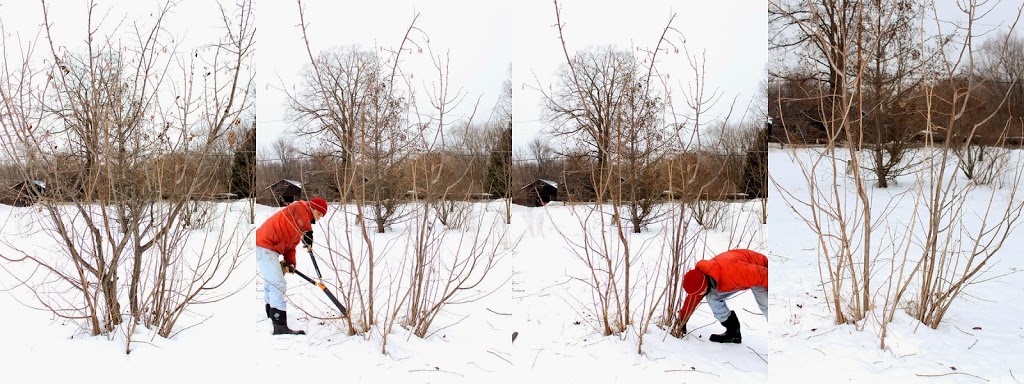 |
| Pruning one of my filbert bushes |
My filberts present one more wrinkle in shrub pruning. Filbert can be trained as a tree or as a shrub. But consider: filberts are susceptible to a disease, filbert blight, which can eventually kill a stem. This makes a good case for renewal pruning, i.e. growing them as shrubs. On the other hand, squirrels love filbert nuts, and one way to keep them at bay is with metal squirrel guards, feasible only on filberts trained as trees.
For now, dogs, cats, traps, and high grass have kept squirrels at bay, so I’m opting for filbert shrubs. The stems are very difficult to root so today’s prunings don’t even tempt me.
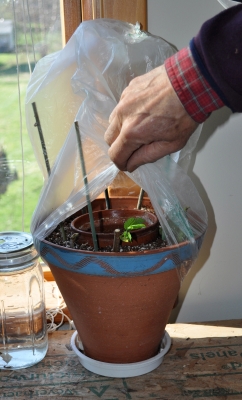

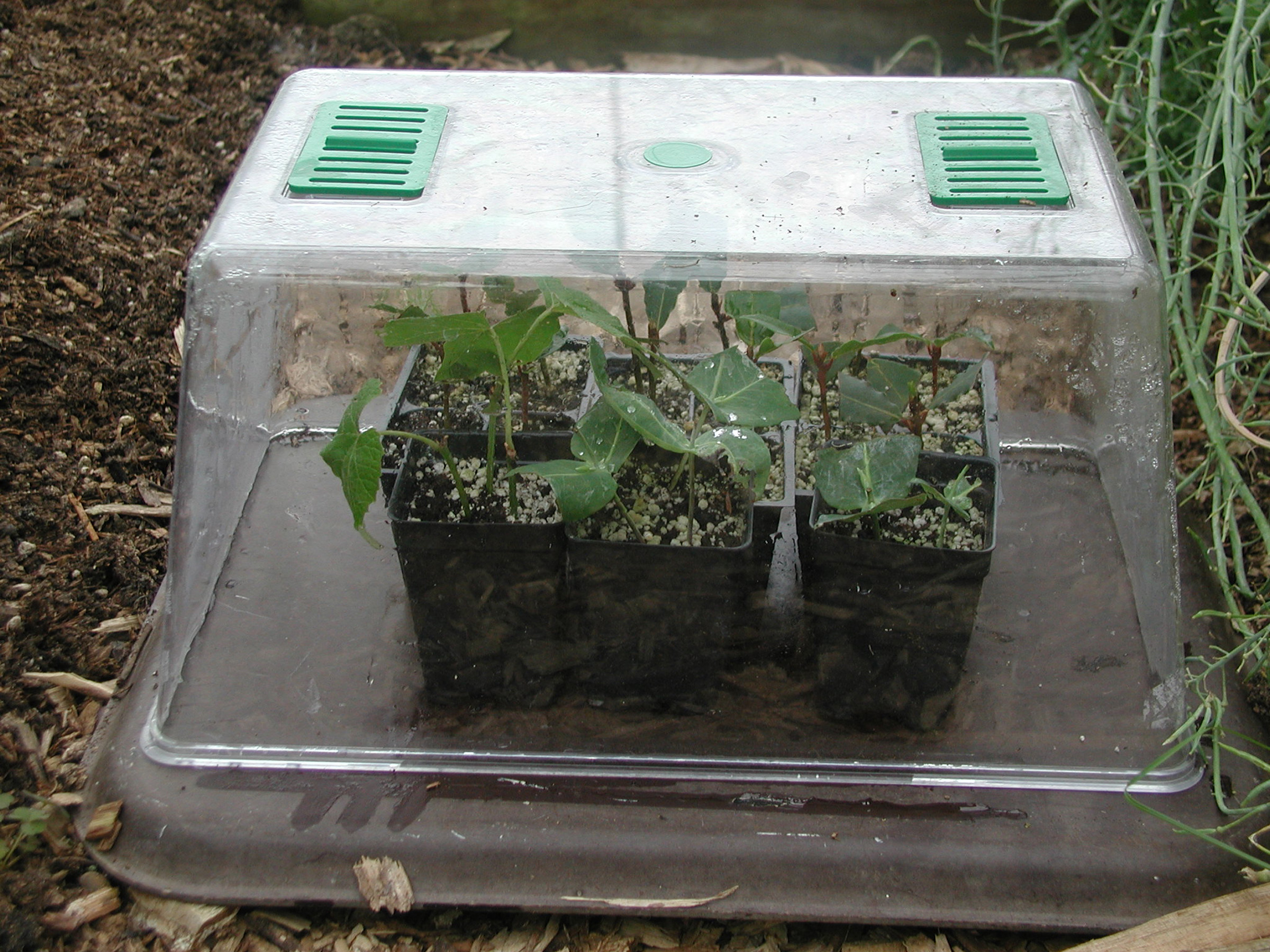
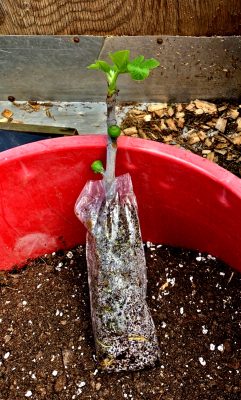
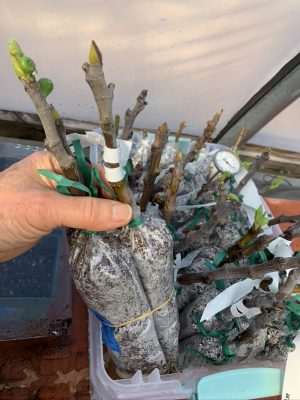
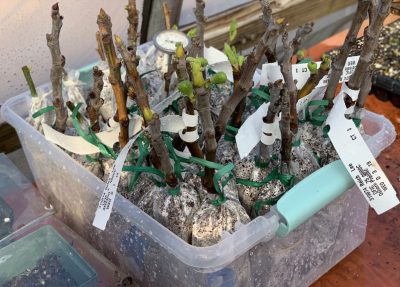 No light is needed until cuttings start to leaf out. Which is an exciting moment, because roots might — or might not — begin to show about then. All that’s needed is to lift a fig pop and take a look. Some of mine showed roots after only 3 weeks! But it’s good to let them get well rooted before disturbing them.
No light is needed until cuttings start to leaf out. Which is an exciting moment, because roots might — or might not — begin to show about then. All that’s needed is to lift a fig pop and take a look. Some of mine showed roots after only 3 weeks! But it’s good to let them get well rooted before disturbing them.
